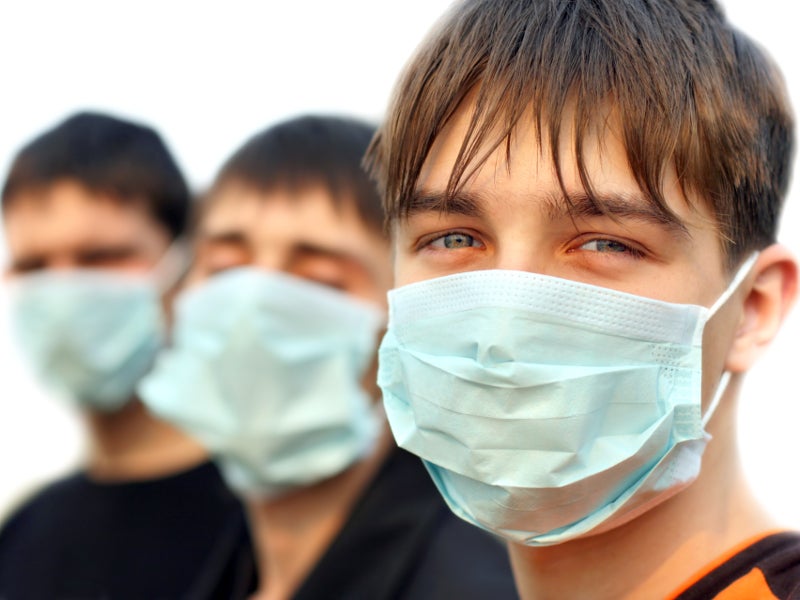
Top tweets on infectious diseases in January 2020
1. Laurie Garrett’s tweet on the Wuhan Virus and how to stay safe
Laurie Garrett, a former senior fellow of the Council on Foreign Relations, shared an article on the Wuhan Virus and how to stay safe. The author lists some important precautionary measures such as wearing gloves, maintaining sanitation levels inside homes, and not eating any meat to protect oneself from contracting the coronavirus.
As the epidemic spreads worldwide, Beijing imposes travel restrictions, proposing a complete lockdown, thereby disallowing people to travel out of the country.
From all over the world I've been getting fearful questions about how people can protect themselves from #nCoV2019 infection. After responding to some individually, I decided to pull it all together. I hope someone will dist. this in Mandarin & Cantonese.https://t.co/yku9OPVA1f
— Laurie Garrett (@Laurie_Garrett) January 25, 2020
Username: Laurie Garrett
How well do you really know your competitors?
Access the most comprehensive Company Profiles on the market, powered by GlobalData. Save hours of research. Gain competitive edge.

Thank you!
Your download email will arrive shortly
Not ready to buy yet? Download a free sample
We are confident about the unique quality of our Company Profiles. However, we want you to make the most beneficial decision for your business, so we offer a free sample that you can download by submitting the below form
By GlobalDataTwitter handle: @Laurie_Garrett
Retweets: 1,314
Likes: 1,758
2. Julia Belluz’s tweet on the coronavirus’ spread worldwide
Julia Belluz, a health correspondent, shared an article on how quickly the coronavirus is spreading, right from its breakout in Wuhan, China. The article details how thousands have been sickened in approximately a dozen countries, including the US, Canada, Malaysia, Singapore, Thailand, Vietnam, Nepal, Germany, Taiwan, France, Australia, and the South Korea.
Chinese authorities have quarantined cities and are trying to determine how contagious a pathogen can be. Meanwhile, WHO reports confirmed that there have been no human-to-human transmissions of the virus out of China. However, it could be a possibility.
A new SARS-like #coronavirus is spreading rapidly in Asia
& the first case just popped up in the US.The 30-something Washington state resident fell sick with pneumonia after returning to Seattle from Wuhan, China— the outbreak epicenter — Jan. 15. 1/https://t.co/r4JNAuSfdC
— Julia Belluz (@juliaoftoronto) January 21, 2020
Username: Julia Belluz
Twitter handle: @juliaoftoronto
Retweets: 376
Likes: 377
3. Peter Hotez’s tweet on the dangerous effects of infectious diseases against its vaccines
Peter Hotez, a vaccine scientist and author, shared an article describing the odds if unvaccinated and sick. He compares the dangerous effects of three diseases including influenza, cervical cancer, and measles, which are more fatal than their corresponding vaccines that cause only minimal side effects.
NEW @nytimes I teamed with @billmarshnyt graphics editor to counter #antivax misinformation, comparing dangerous effects infect dis with the minimal side effects of their corresponding vaccines. Special thanks @devi_lockwood @nanaasfour @JohnsHopkinsSPH https://t.co/UbPFN8lPXG
— Prof Peter Hotez MD PhD (@PeterHotez) January 9, 2020
Username: Peter Hotez
Twitter handle: @PeterHotez
Retweets: 259
Likes: 390
4. Helen Branswell’s tweet on the ineffective thermal screening at airports
Helen Branswell, a senior writer of infectious diseases and global health, shared an article detailing how thermal screening at airports was ineffective in detecting the coronavirus, according to an analysis by the London School of Hygiene & Tropical Medicine (LSHT).
The analysis further revealed that the tool was of limited use, detecting one in five passengers infected with the coronavirus after a 12-hour flight.
New analysis from @LSHTM estimates that thermal entry screening at airports would only identify 9 of 100 #2019nCoV infected travelers coming off a 12-hour flight. Tool of limited usefulness. https://t.co/veBUATLGcF
— Helen Branswell (@HelenBranswell) January 30, 2020
Username: Helen Branswell
Twitter handle: @HelenBranswell
Retweets: 138
Likes: 171
5. Ron Daniels’ tweet on the difficulty in spotting sepsis
Dr Ron Daniels, the creator of the UK Sepsis Trust, shared an article on the difficulty of spotting Sepsis at any age, let alone young. He prompts parents to pop the question themselves, as they would know their children better than healthcare professionals. The article details how Rachael Pedrick managed to save her one-year-old daughter Holly, by storming into GP surgery after eight hours since waiting for an appointment.
Holly was suffering from flu symptoms such as diarrhoea, vomiting, and sticky eyes.
#sepsis can be hard to spot at any age, let alone in the very young. Parents know their own children better than a health professional- if very worried, trust your instinct and #JustAsk – Could it be sepsis? https://t.co/SGuWwlef9i
— Dr. Ron Daniels BEM (@SepsisUK) January 5, 2020
Username: Dr Ron Daniels
Twitter handle: @SepsisUK
Retweets: 109
Likes: 199
6. Ian Mackay’s tweet on the global tally of the suspected coronavirus infected
Ian Mackay, a virologist and scientist, tweeted on the number of suspected cases of the coronavirus worldwide. He stated that approximately 217 cases were registered from China, which included 198 from Wuhan, 14 from Guangdong, and five from Beijing. He also tweeted that Thailand reported two cases, while Japan and South Korea one each.
Global case tally of the novel #Wuhan #pneumonia #coronavirus = 221:
🌏217 in China
🔅 198 in Hubei province (Wuhan)
🔅 14 in Guangdong
🔅 5 in Beijing
🌏1 in Japan
🌏2 in Thailand
🌏1 South Korea— ɪᴀɴ ᴍ. ᴍᴀᴄᴋᴀʏ, ᴘʜᴅ 🦠🤧🧬🥼🦟🧻 (@MackayIM) January 21, 2020
Username: Ian M Mackay
Twitter handle: @MackayIM
Retweets: 130
Likes: 131
7. Tara Smith’s tweet on the Marburg virus being found in Sierra Leone bats
Dr Tara C Smith, and infectious diseases epidemiologist and writer, shared an article on the Marburg virus, which can cause haemorrhagic fever, to be present in fruit bats in Sierra Leone. The article also stated that it was the first time that the Marburg virus was detected in West Africa.
Like the Ebola virus, Marburg can be fatal and has the potential to spread to humans. The virus was detected in eleven Egyptian rousette bats, which typically feed on fruits. Infected bats contaminate the fruits with the release of the virus through their saliva, urine and feces.
In non-coronavirus news, Marburg was just found in bats in Sierra Leone (PCR & live virus)–where no human Marburg cases have yet been diagnosed. https://t.co/JGO0bkuRu8
— Dr. Tara C. Smith (@aetiology) January 24, 2020
Username: Dr Tara C Smith
Twitter handle: @aetiology
Retweets: 94
Likes: 149
8. Maia Majumder’s tweet on infection control
Maia Majumder, a Harvard Medical School faculty, tweeted that planning, preparedness, and infection control can bring an outbreak of a moderate R_0 disease under control without vaccines. Therefore, R_0 estimates for the coronavirus points at the need for more action than panic.
In an earlier tweet, Maia mentioned that the R_0 estimates for SARS are 2 to 5, while only 1.3 on an average for seasonal flu.
Planning, preparedness, and infection control can effectively bring an outbreak of a novel, moderate-R_0 disease to a close even in the absence of vaccines.
Because of this, estimates of R_0 for #nCoV2019 should be viewed as a call to action instead of a reason to panic.
2/2
— Maia Majumder, PhD ✊🏾 (@maiamajumder) January 25, 2020
Username: Dr Maia Majumder
Twitter handle: @maiamajumder
Retweets: 92
Likes: 232
9. Muge Cevik’s tweet on human-to-human transmission of the coronavirus
Dr Muge Cevik, a virology clinician and researcher, shared an article on how the findings of five infected patients of a family presented some unusual results. The report suggested that the coronavirus had an incubation period of three to six days. The report also confirmed human-to-human transmission after a family returned to Shenzhen after contracting the virus from their relatives in Wuhan.
This paper describes the findings of five patients in a family cluster who presented with unexplained pneumonia. This and the above reports suggest that #nCoV2019 has approx 3–6 day incubation period and confirm human-to-human transmission. #IDTwitter https://t.co/qYfcFvqfEM pic.twitter.com/XnyhDoOZtG
— Dr Muge Cevik (@mugecevik) January 25, 2020
Username: Dr Muge Cevik
Twitter handle: @mugecevik
Retweets: 89
Likes: 135
10. Seth Berkley’s tweet on fighting vaccine sceptics in Italy
Seth Berkley, an infectious diseases epidemiologist, shared an article on how vaccines are regaining their importance in present times. The influencer further stated that four years ago, googling the word ‘vaccine’ in Italy would throw a list of antivaccination groups, but today it directs users to WHO sites.
Seth states that one of these great reads are the ‘Burioni effect’, a virologist who has evolved from a professor to a celebrity for fighting vaccine sceptics. The Italian government has always maintained that vaccines are safe. However, a number of scandals have marred its use.
“Four years ago, googling "vaccines" in Italy would bring up a list of antivaccination groups…. now, the first hits include…. sites created by @WHO.” Great read on the “Burioni effect” & @RobertoBurioni’s admirable efforts 2tackle #vaccine skepticism. https://t.co/2CXRyjm2Zq
— Seth Berkley (@GaviSeth) January 8, 2020
Username: Seth Berkley
Twitter handle: @GaviSeth
Retweets: 86
Likes: 300




Related Company Profiles
Harvard Medical School
G&P Limited